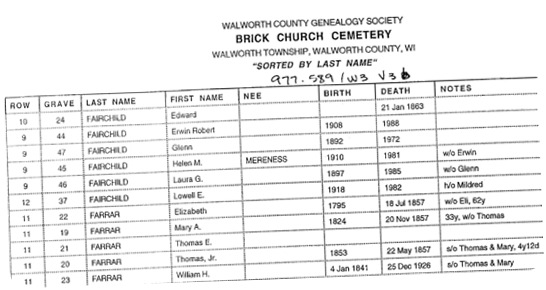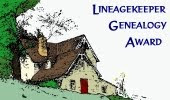Little was known about my 2nd great grandfather, Thomas Farrar. Time and location had separated his descendants. Family stories and memories died over the generations.
A cousin recorded a few notes about Thomas that she’d heard over the years and passed them on to my mother. She related that he was from England, that his wife had died while still young and he had moved west to Copperopolis, California bringing his two small daughters with him in the mid-1850’s. End of story.
When I visited my great grandmothers grave in Copperopolis, California, I noted the inscription on her tombstone said that she was a native of South Carolina. I had a reference point to start the search. The stone said that Grandma Helen Farrar Drew was born in 1851 and I knew she was age ten or younger when grandpa Thomas Farrar took Helen and her sister, Julia, west to California. The 1860 census for South Carolina probably wouldn’t provide any help in finding the family and that quickly proved true.
1850 Census and Town History
Did Thomas and his wife, Mary Tirrill live in South Carolina in 1850? After a long search, I found them there in Lexington. The census entry said Thomas and Edith Farrar. Edith? Her name was a mystery for a quite a while, until I found a book titled “History of Bristol, Grafton, New Hampshire” by R. W. Musgrove. In it, Musgrove listed Mary as a child in the family of Seth and Azuba Chandler Tirrill. Her full name was Mary Adith Tirrill and her family lived in far northern town of  Stewartstown, New Hampshire.
Stewartstown, New Hampshire.
The ear of a southern census taker no doubt heard the New England accent of Mary or the English accent of Thomas pronounce grandma’s name as Edith. This census record told me that she went by her middle name … at least at that point in time.
Thomas was listed as coming from England. Importantly, the young couple were living with Jno. and Sibla Farrar and their four children, William, Alfred, Sarah and Samuel who were also born in England. Were they Family? I assumed “Yes” and knew that Jno. = John, so I had more clues.
Thinking that the family emigrated together, I now had six more match points for ships passenger records.
Ship Passenger Records
Occasionally, researchers are lucky and find their ancestors listed in passenger records with no misspellings. I was looking for a pre-1850 record, which always proves to be a more difficult search. Ellis Island hadn’t been created as an immigration point yet, so I looked for records on the Castle Garden site which lists information on immigrants through New York from 1830 – 1892.
Success … but not until I looked at the data with an open mind. Thomas along with John and Sibla’s family did travel together, however, their name was listed as Fanin not Farrar. I knew that I had to search for spellings other than those I was familiar with and that proved true yet again. Traveling to the Family History Library in Salt Lake City, I found them listed on a CD of ships passengers records but this time listed as Farran. Because of the numerous match points of first names, I knew that this Thomas was my Thomas Farrar. They had traveled on the ship Columbine from London.
Citizenship
The History of Bristol, New Hampshire book said that grandma had died in Walworth, Wisconsin. I never would have looked for the family there without that information. What were they doing there?
The answer took a lot of research effort. I had to find records on most of Mary’s family and cousins to find the clues. Other than some lumbering and sawmills there wasn’t much industry in Stewartstown, New Hampshire to support a new ‘crop’ of young men needing to start their adult lives and support their families. Many of them migrated westward in search of their fortunes or at least in search of the opportunities offered on the ‘frontier’. Several of Mary’s brothers and some cousins moved to Wisconsin with that thought in mind. I surmise that Thomas Farrar heard of their plans and related them to his brother John, because they moved there too.
Another trip to the Family History Library in Salt Lake City provided great rewards in my quest. I found the naturalization applications of both Thomas and John Farrar in Walworth County. Thomas’ application stated that he was born in England in 1820 and had arrived in America in 1847. The arrival date matched the ships passenger record information.
The day at the library provided further rewards. The Walworth County Historical Society had inventoried the cemeteries in their area and their publication had newly arrived at the library. Looking through it, I found the burial listing for grandma Mary Tirrill Farrar, her son, Thomas and her mother-in-law, Elizabeth Farrar in the Brick Church Cemetery. After three decades of looking, I’d found gold. I contacted a member of the society and shortly thereafter had photos of their tombstones to add to their records.
Hopping the Pond and Tombstone Records
I could trace Thomas forward in time in California until he disappeared after moving to Sacramento after 1870. How was I going to trace his lineage in England? The passenger information and naturalization  records told me that he was from England and had left from London. Wonderful! …. There were thousands of Farrar’s in and around London. Thomas and John were very common names. How could I find ‘my’ Thomas in that group?
records told me that he was from England and had left from London. Wonderful! …. There were thousands of Farrar’s in and around London. Thomas and John were very common names. How could I find ‘my’ Thomas in that group?
I’ve had to make an ‘assumption’ that I still hope is correct today. In the Brick Church Cemetery in Walworth, all of the Farrar’s are buried next to each other. In fact, one of the burial spaces next to Mary and young Thomas is empty but in the name of Thomas Farrar. He’d obviously purchased a burial plot for his family when his wife and son died within months of each other. Adjacent to their graves is the grave of Elizabeth Farrar. Her tombstone says she was born in 1795 and died within weeks of Mary and young Thomas AND that she was the wife of Eli Farrar. My assumption is that Elizabeth is the mother of Thomas and John Farrar and that she died from the flu epidemic that killed her daughter-in-law and grandson. Elizabeth was old enough to be the mother of Thomas and John. Unfortunately, I have not found any additional evidence of her existence other than the tombstone.
After a few weeks of research, it was obvious that I had to look for another way to find the Farrar family in England. Fortunately, John Farrar married a woman with an ‘unusual’ first name. I found John listed in the 1870, 1880 and 1900 censuses in Macon, Missouri. His wife was listed as “Selina”. The passenger record listed her name as “Sibla” as did the 1850 census record in Lexington, South Carolina.
Additional research on the Internet provided a link to obituaries in Macon, Missouri, that had been transcribed into a book that was placed in the Macon library. I contacted a very sweet librarian there and was sent a copy of all of the Farrar obituaries in the book. Selina Farrar’s obituary revealed that she was born near Huddersfield, Yorkshire, England and that she and John were married there. Wow! I’d been looking in  London when they were actually from far north Huddersfield. Looking at the Free BMD records on RootsWeb, I found their marriage entry in Huddersfield and have assumed that John’s family was from that area.
London when they were actually from far north Huddersfield. Looking at the Free BMD records on RootsWeb, I found their marriage entry in Huddersfield and have assumed that John’s family was from that area.
I still haven’t found “my” Farrar ancestry in Yorkshire. The location seems to have been home to a huge group of Farrar’s, so I’m spending my time transcribing all of the Farrar census records in and around Huddersfield hoping to find enough clues to punch through the Brick Wall that is blocking my ancestral knowledge.
As time goes on, I’m confident that with enough hours spent in research, keeping an open mind and distrusting any of my ‘assumptions’, I’ll push through the wall. It may be one brick at a time or I may find one keystone bit of data that causes the entire wall to collapse …. but that wall is going to come down. Failure is not acceptable.
When you run into brick walls in your own research, remember to open your mind and look for spellings and locations that you’d never typically consider. Assemble your known facts and review them constantly for clues that you haven’t explored. You probably know a lot more than you think, but aren’t recognizing the clues in your hands. Put on your Sherlock hat and assemble your thoughts on paper. Draw a vertical timeline and add your discoveries along its length. Then review everything you have found repeatedly over time, looking at the data through a different “window” every time. Eventually, with focused effort, you’ll probably destroy your brick walls. Here’s to success in all our own ancestral quests.










1 comments:
I know that there are some death records for Wisconsin for the time period in which you family members died. Have you had any luck in finding any? I know that I am always looking for vital records in my family tree.
Best of Luck.
Post a Comment